Embed presentation
Downloaded 229 times



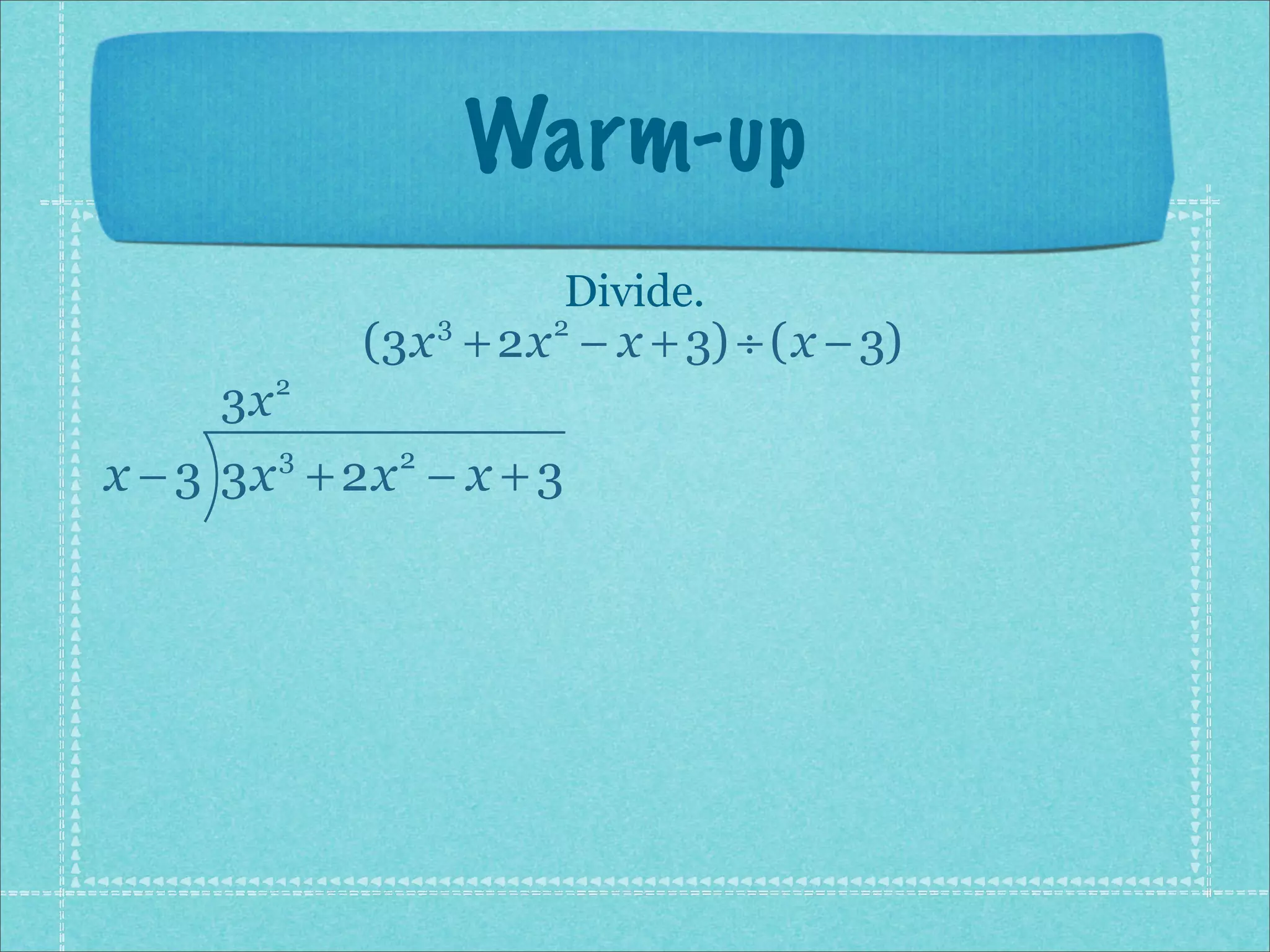
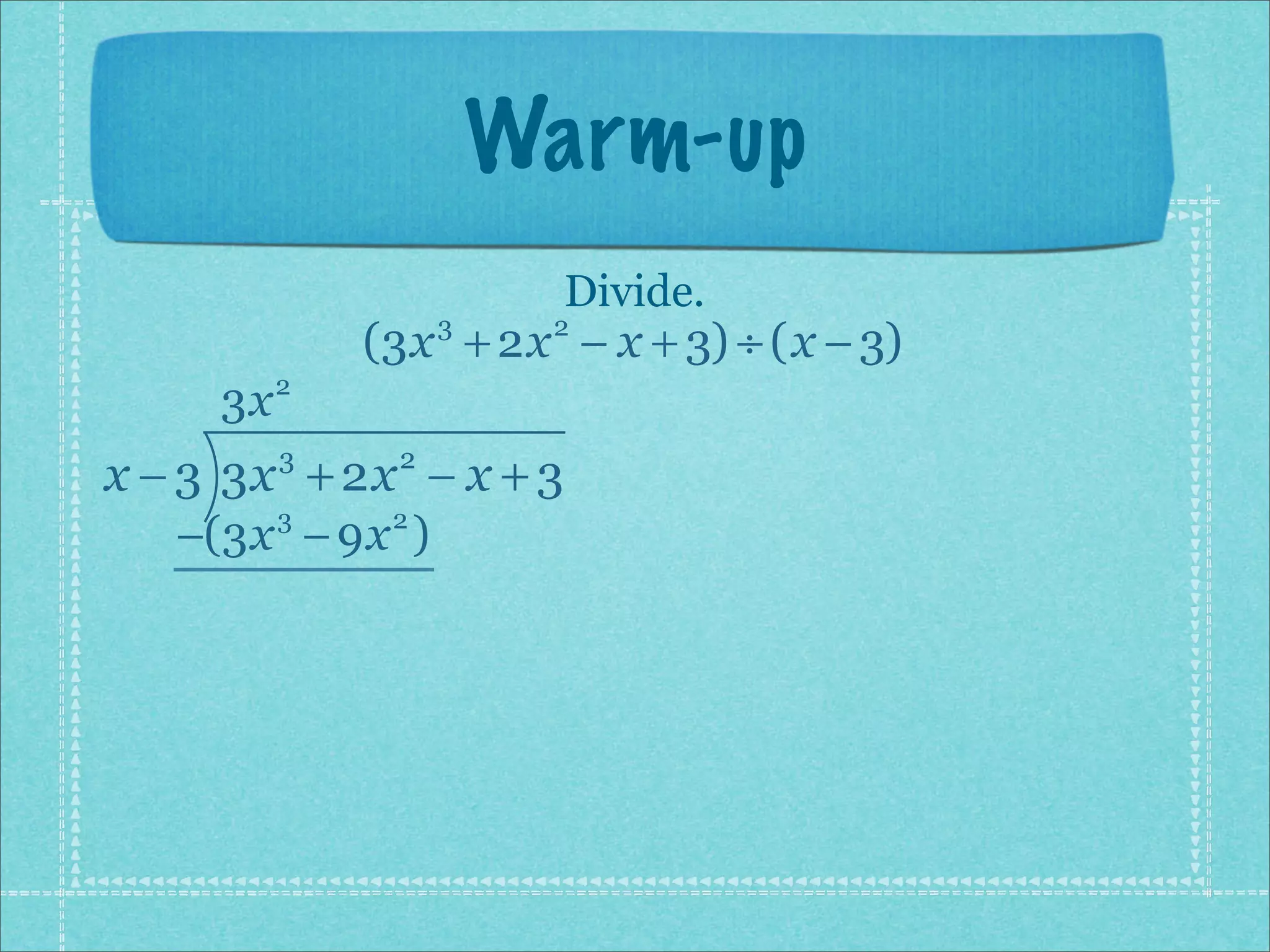






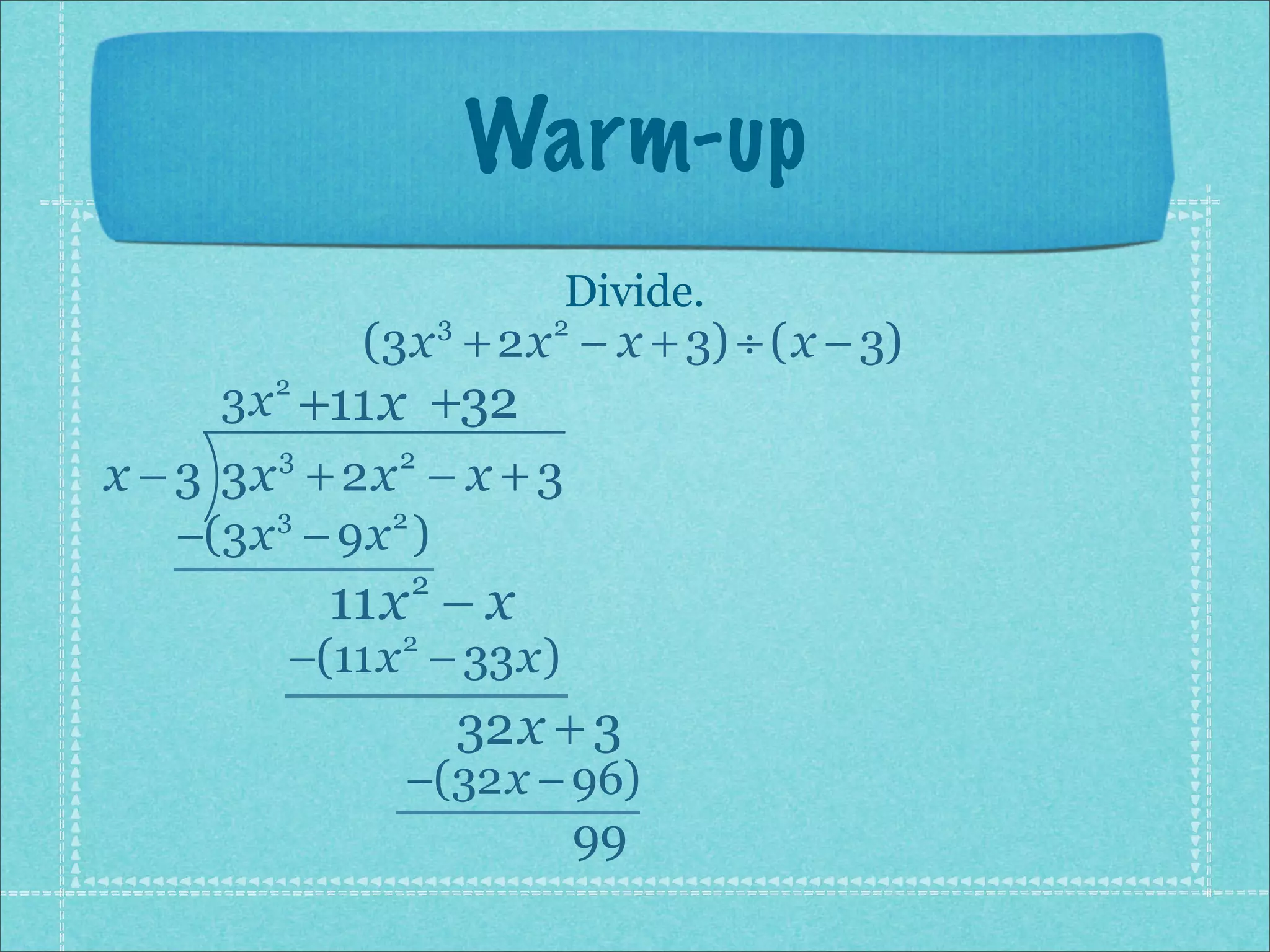


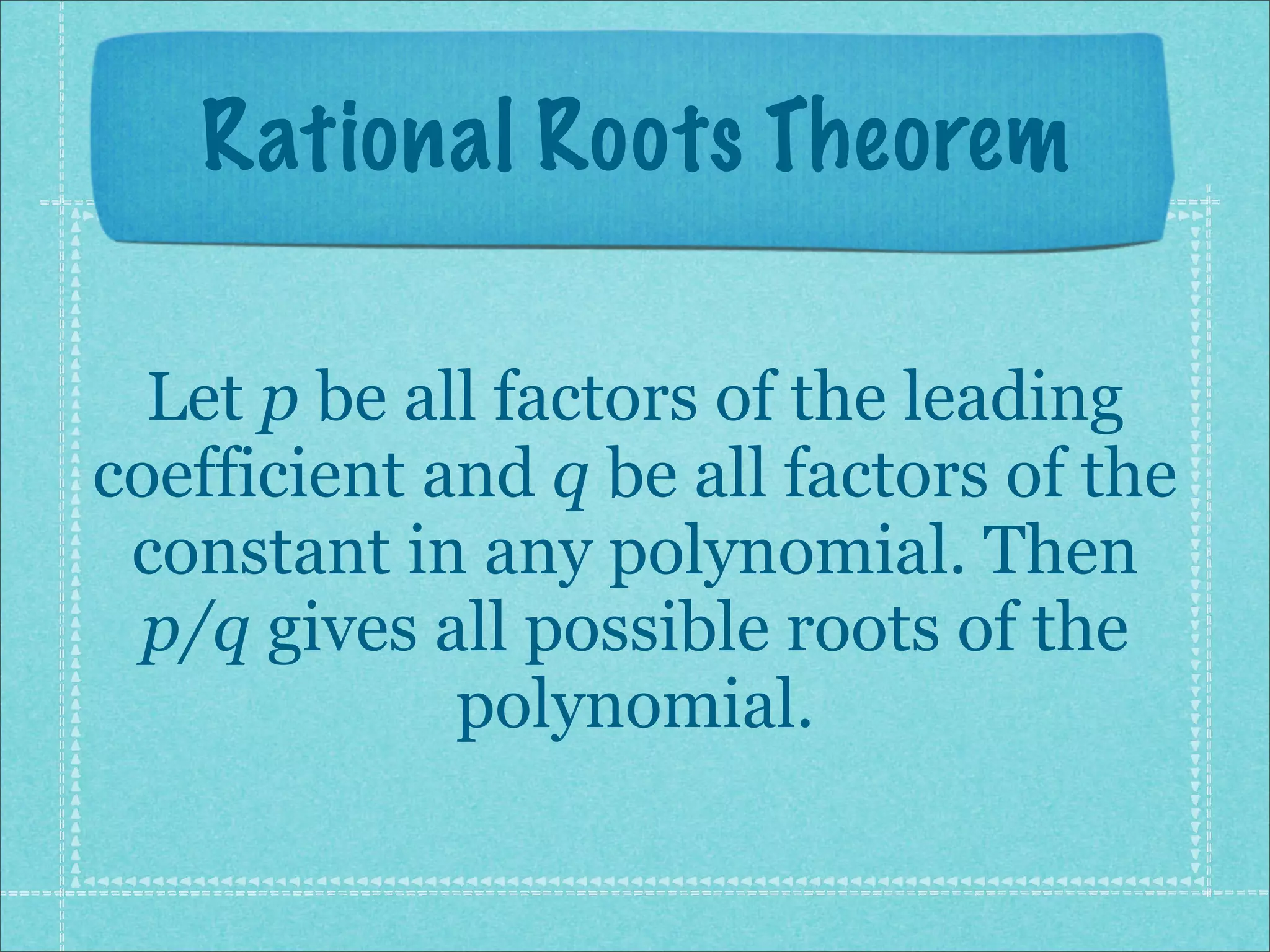

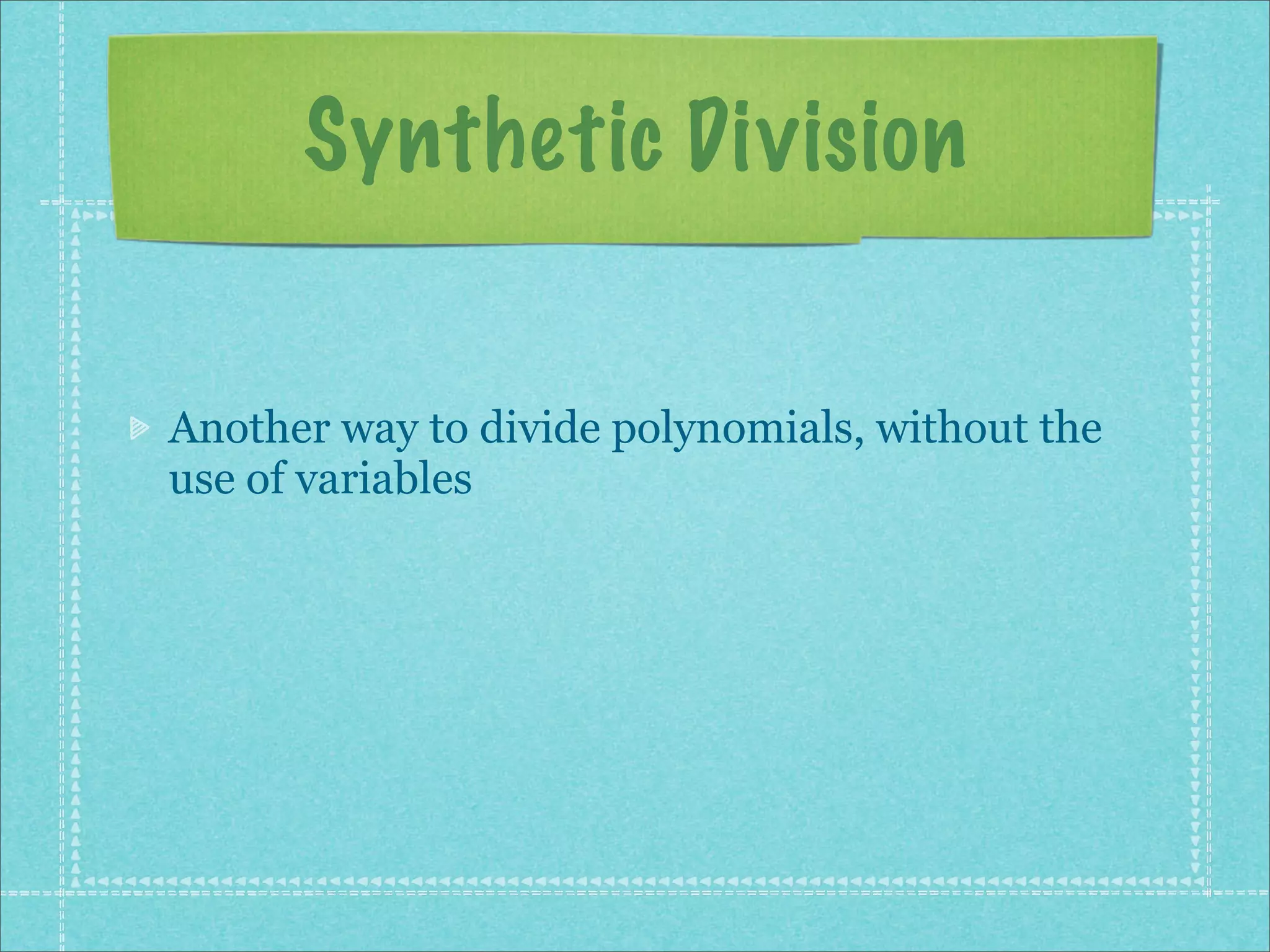







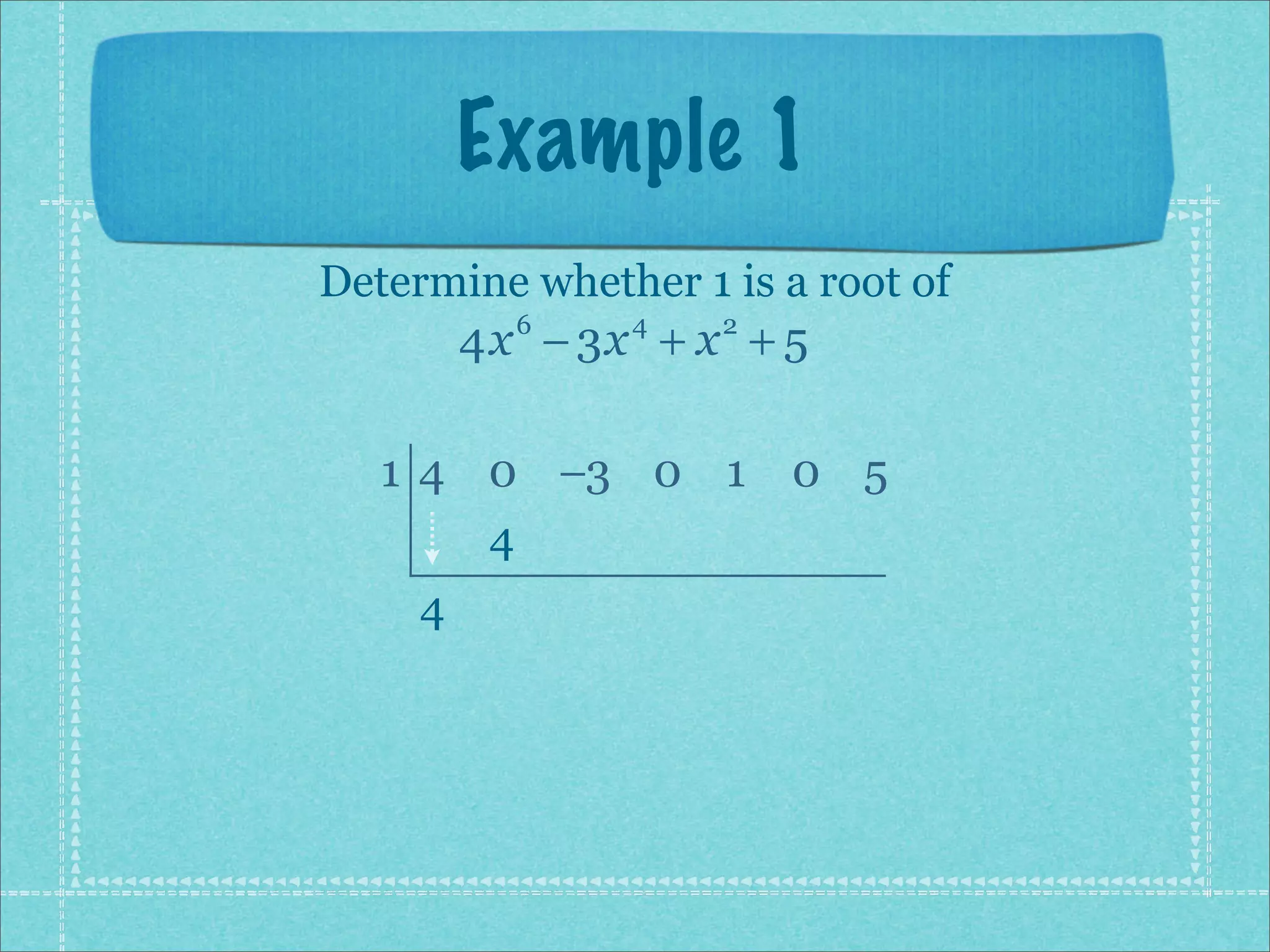






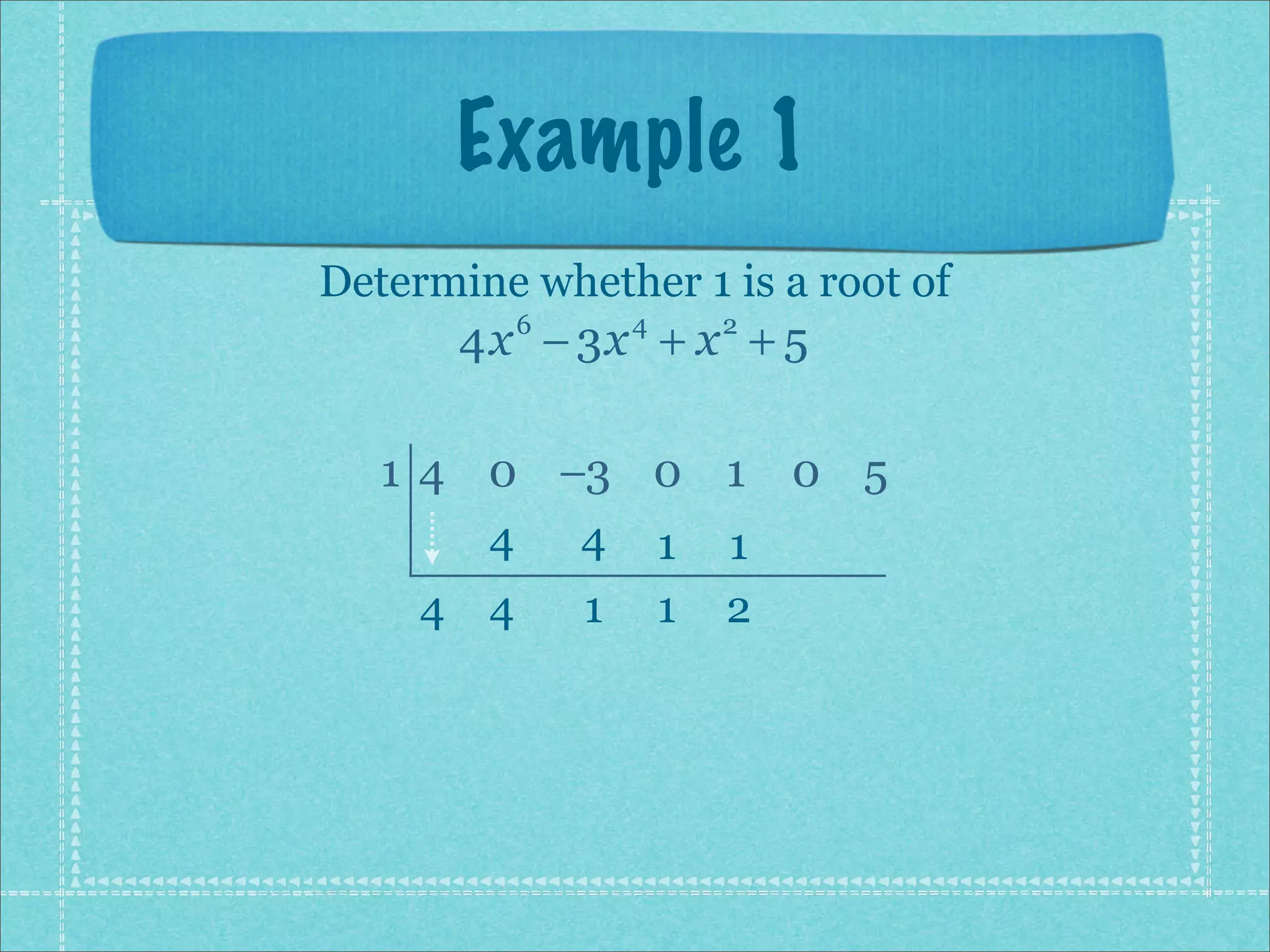
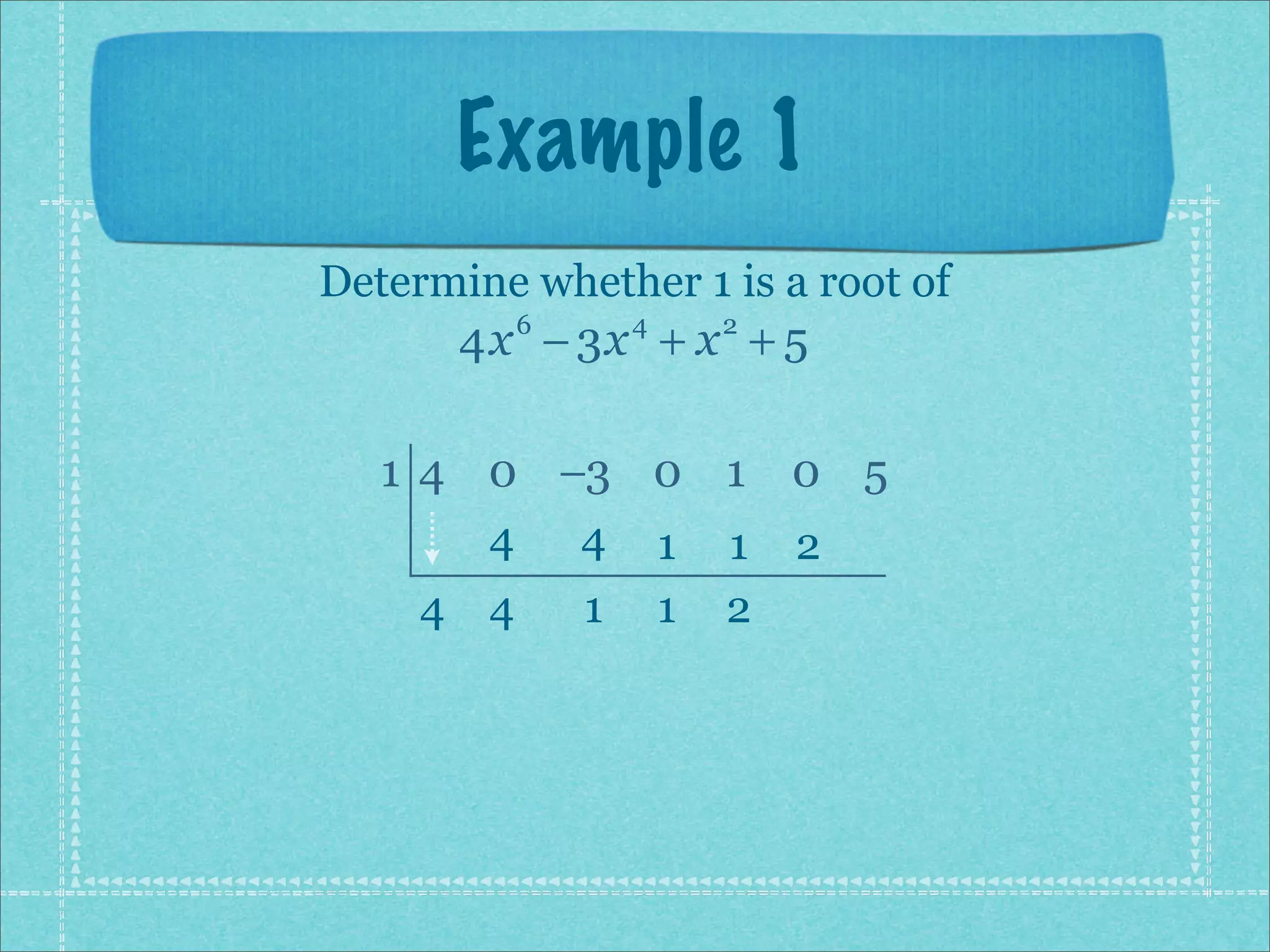
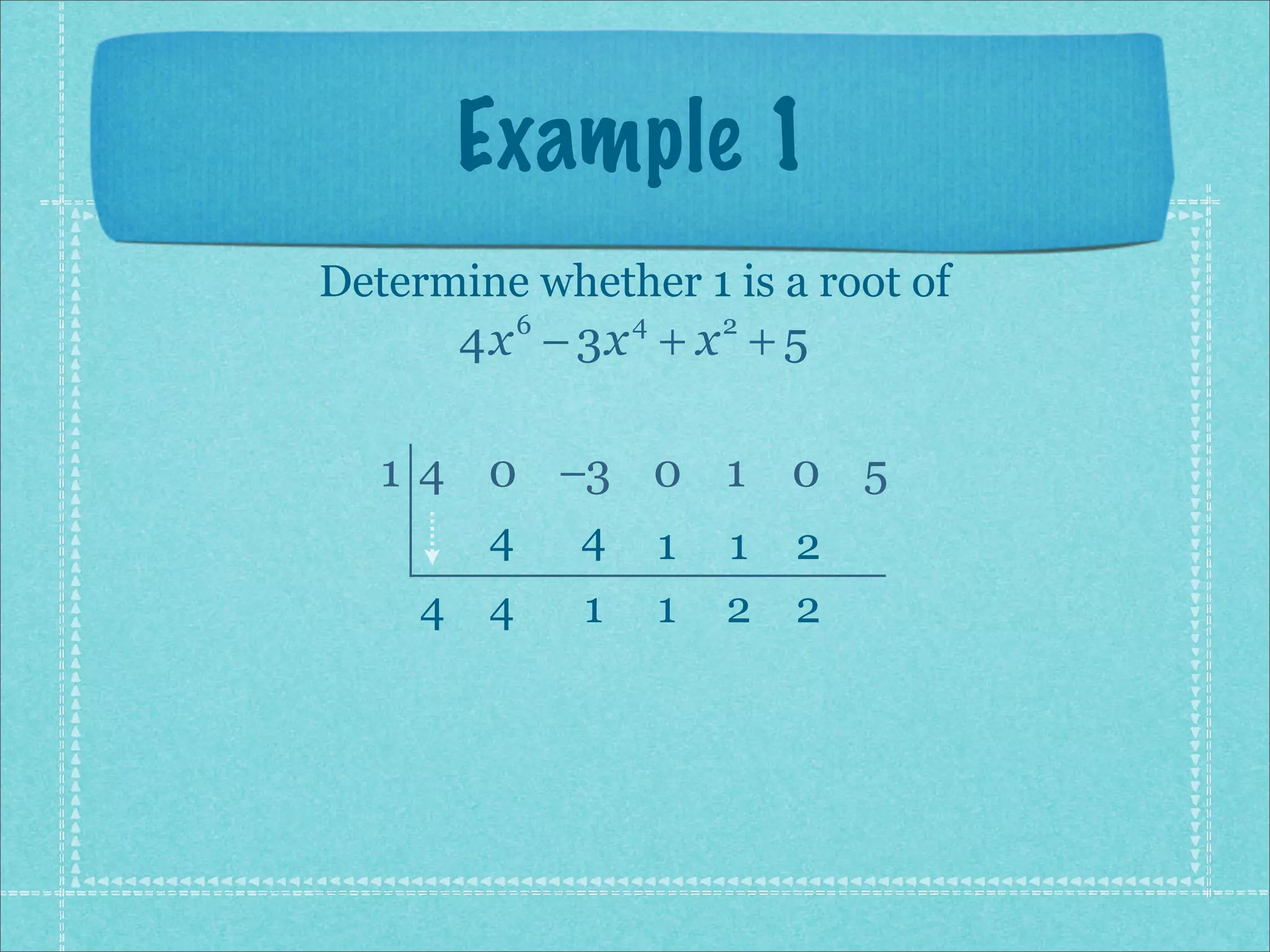
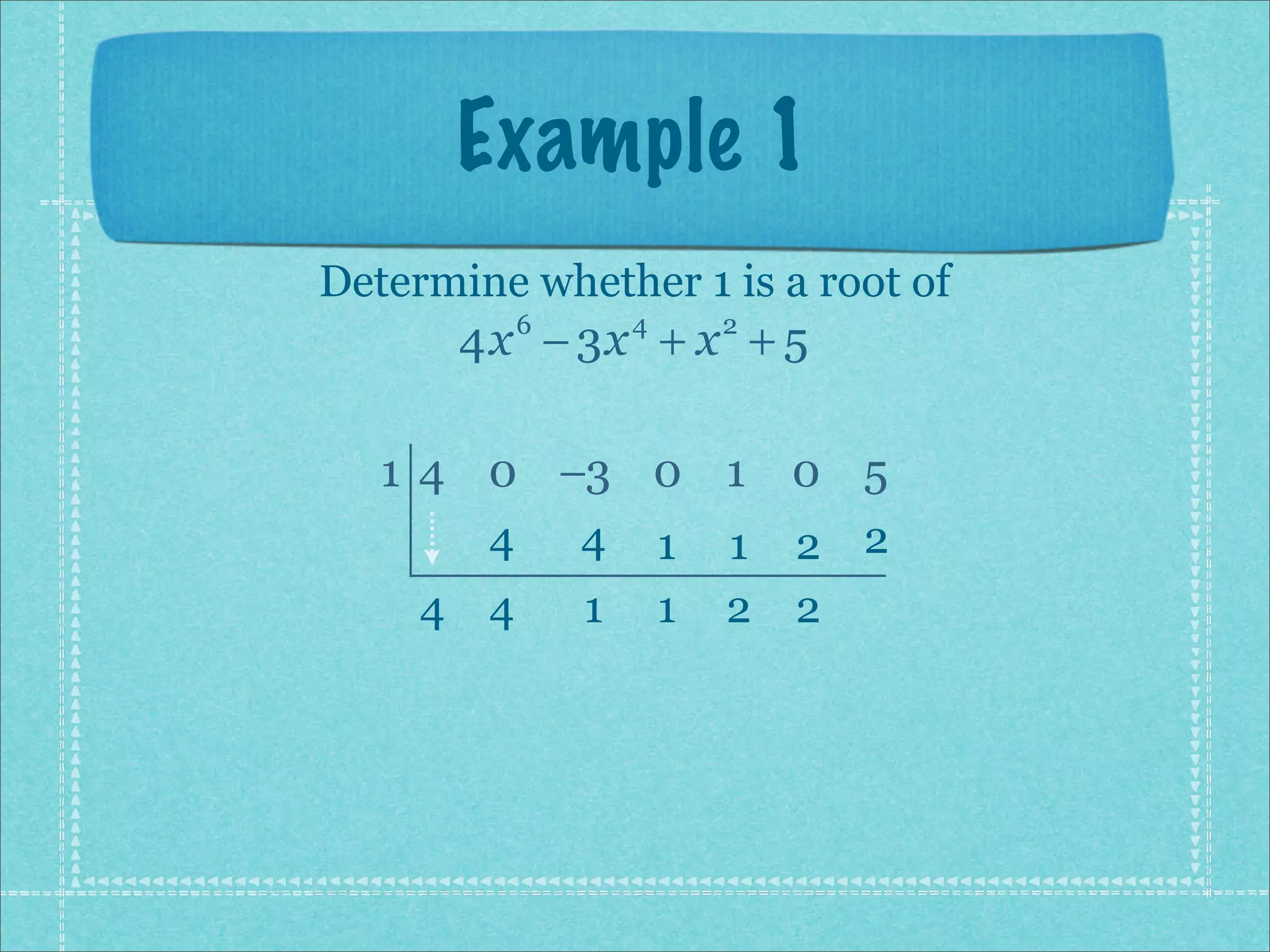


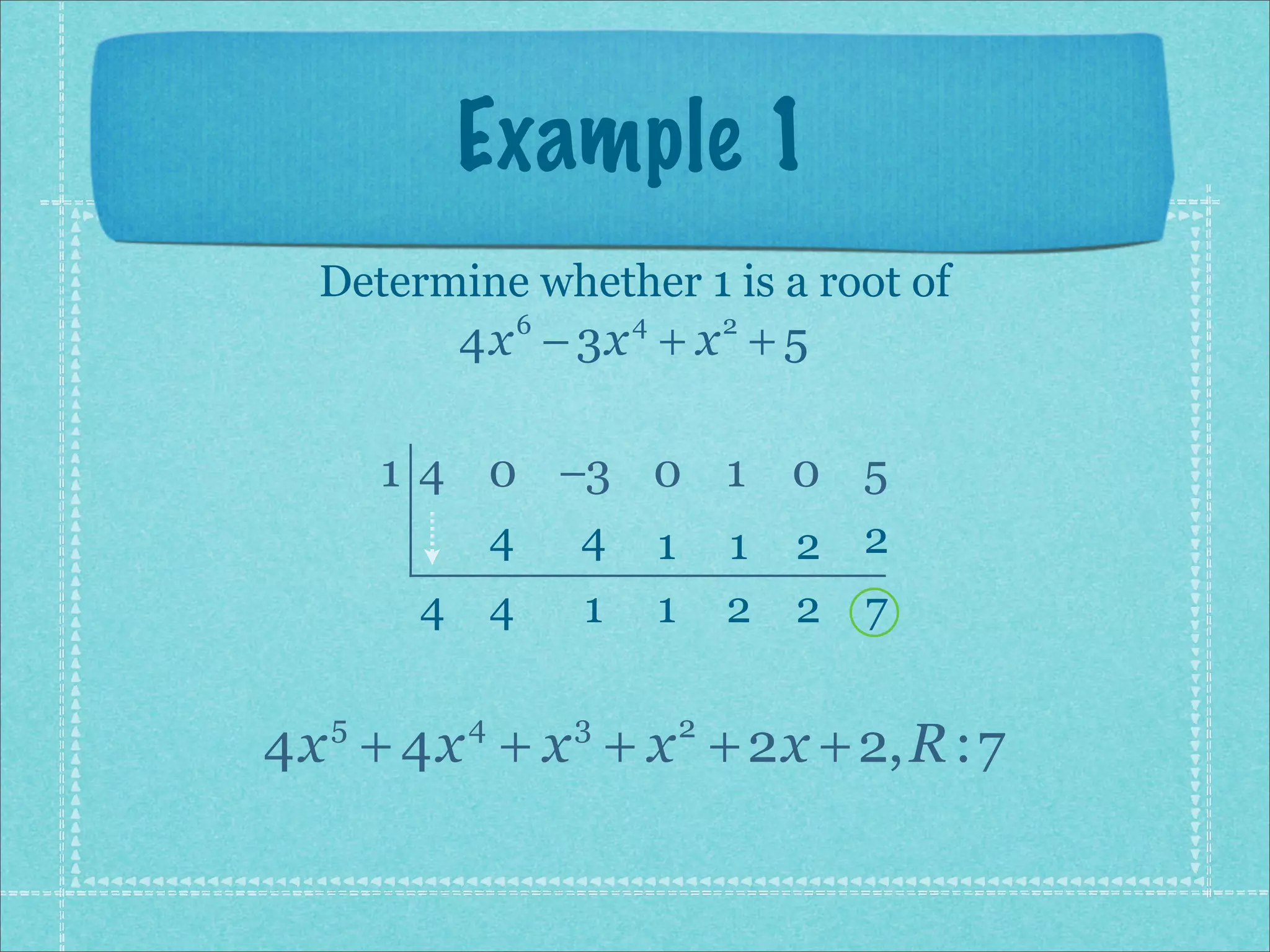

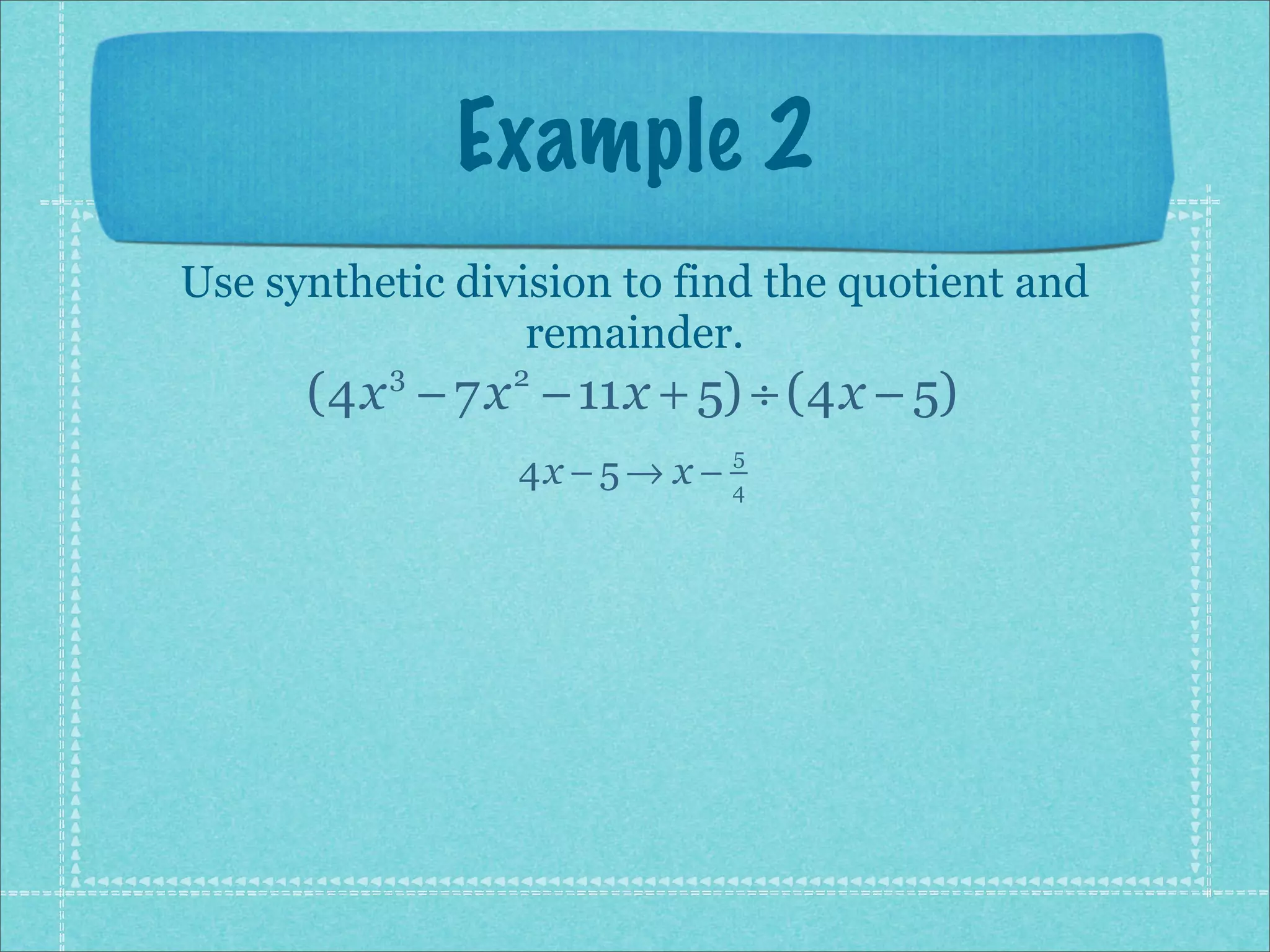



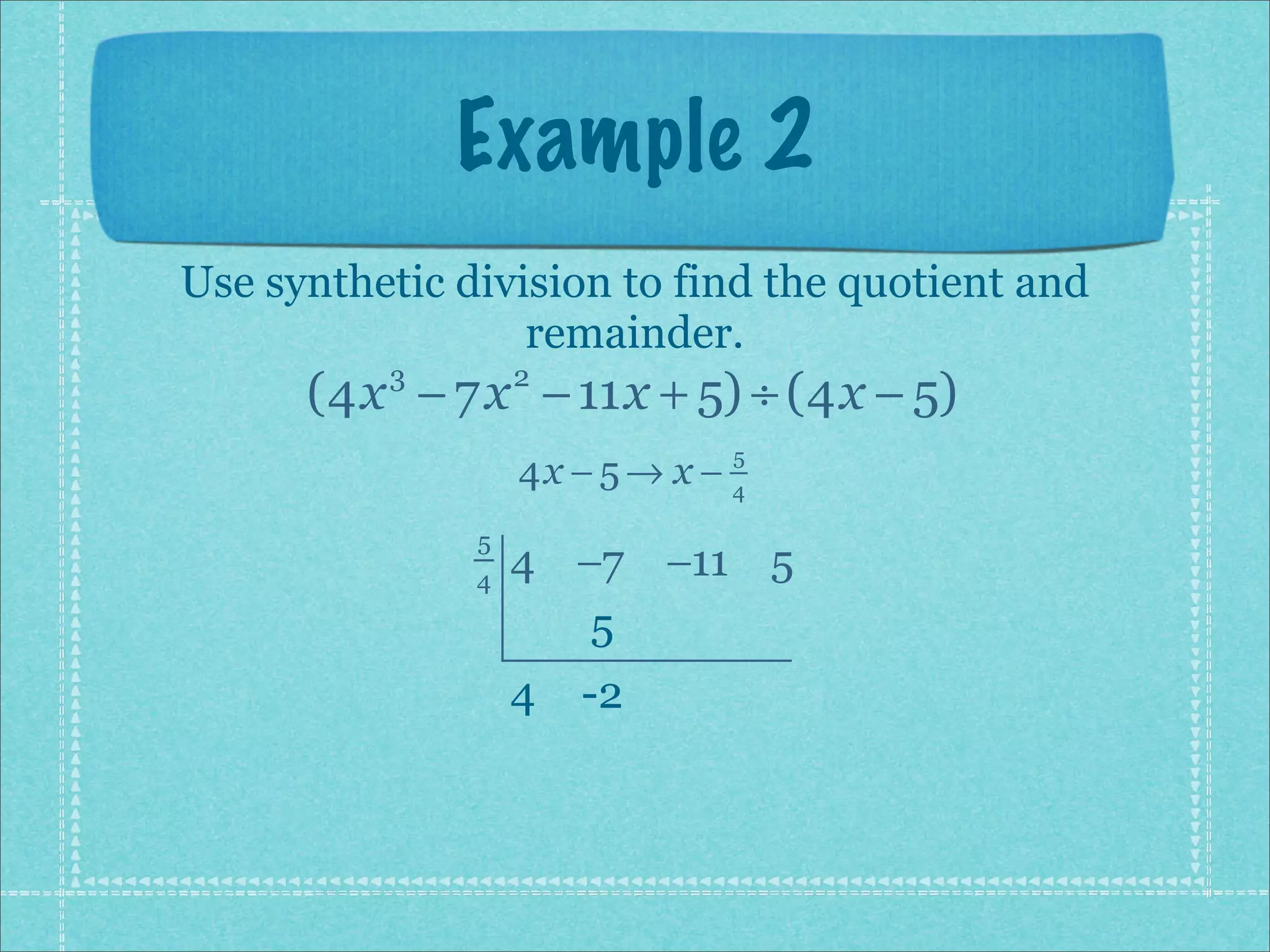



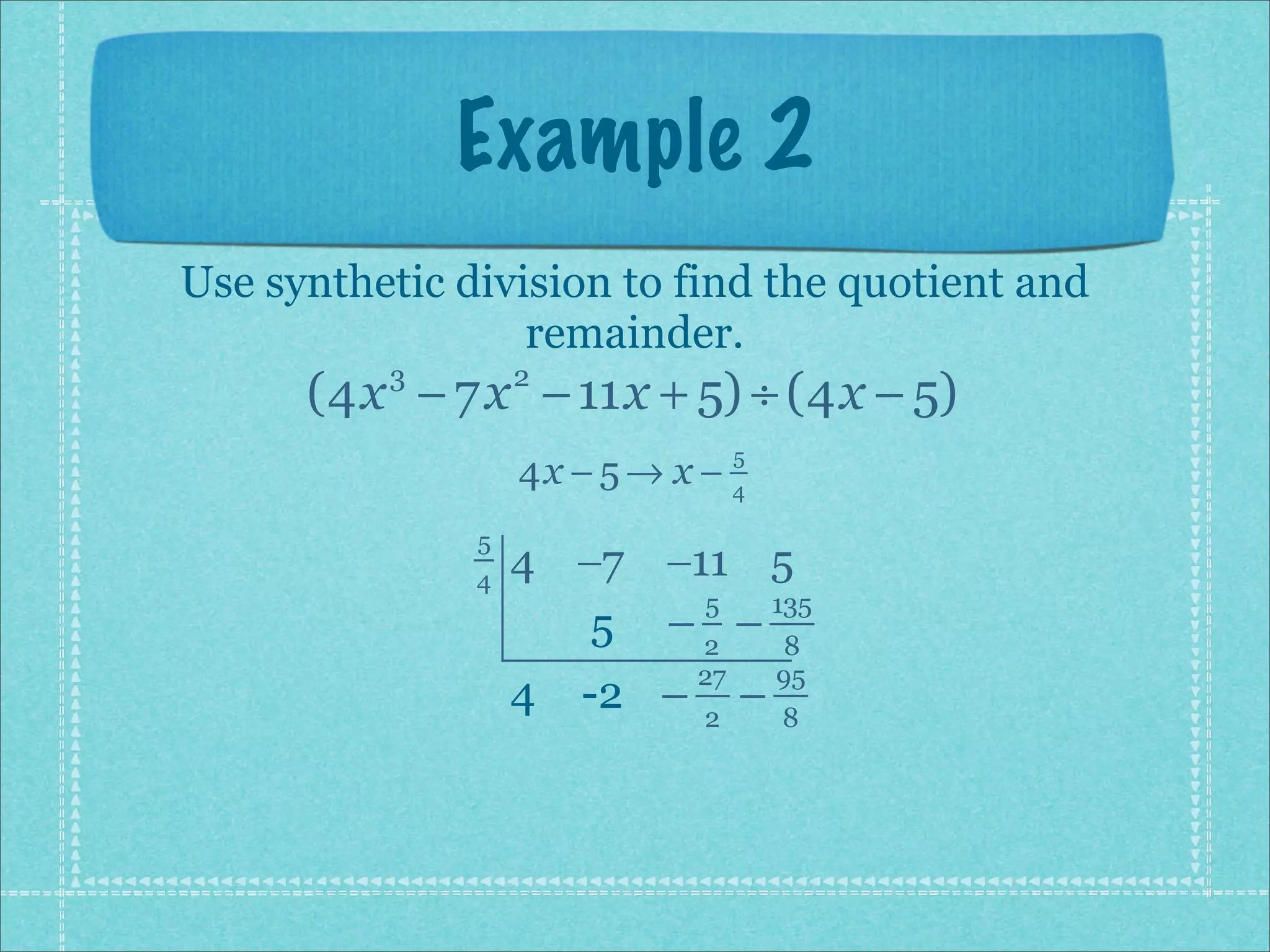
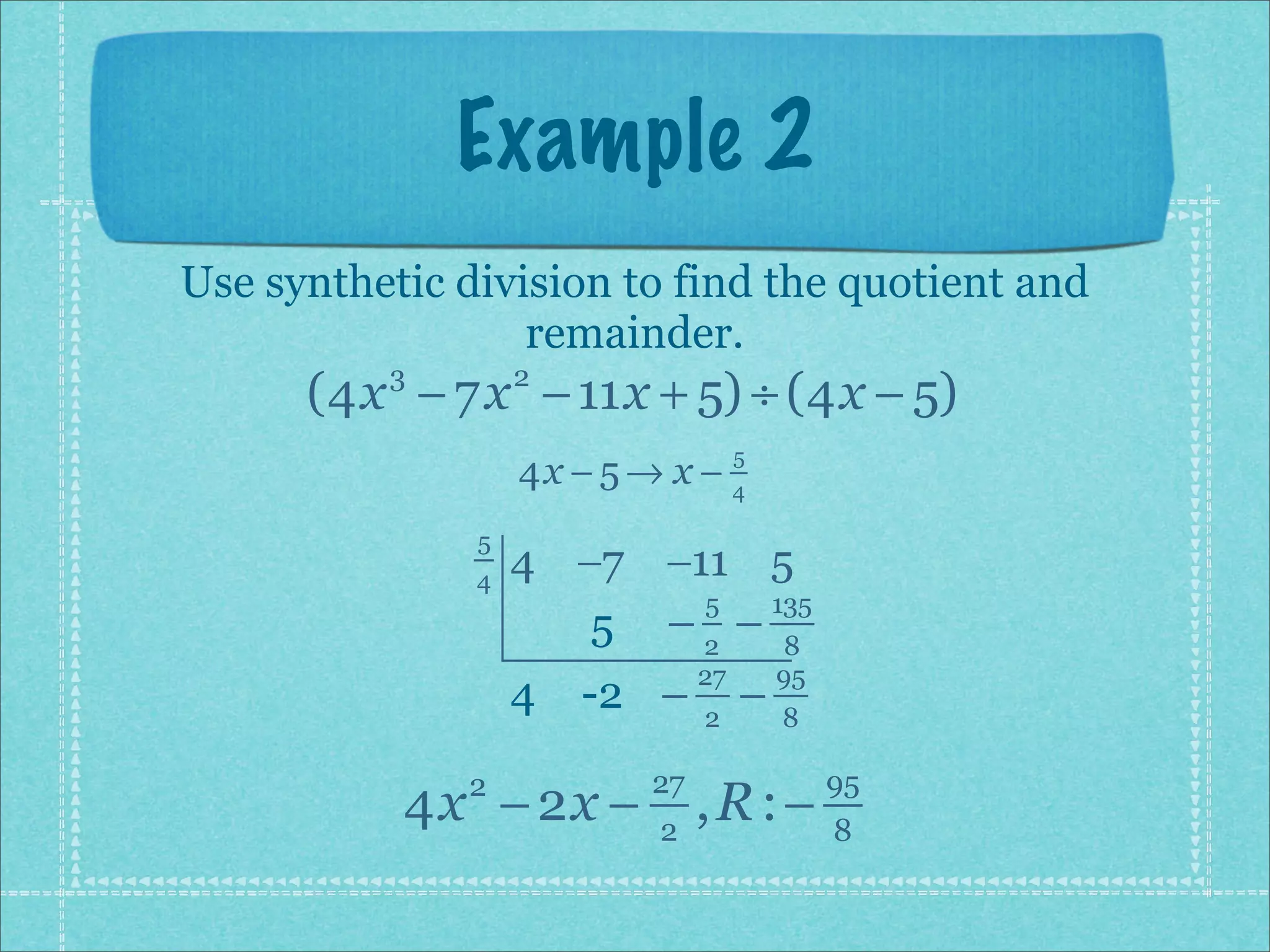

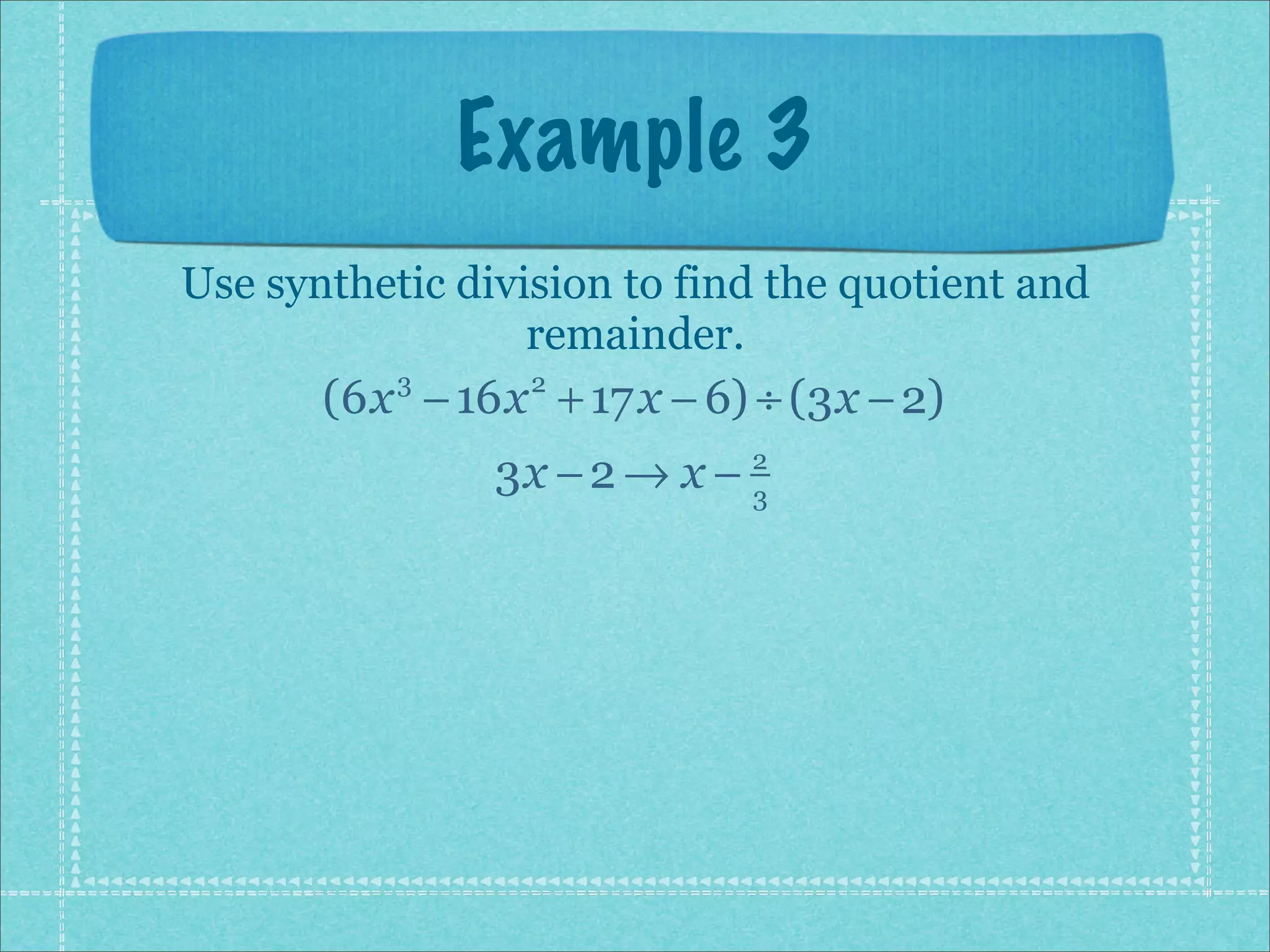
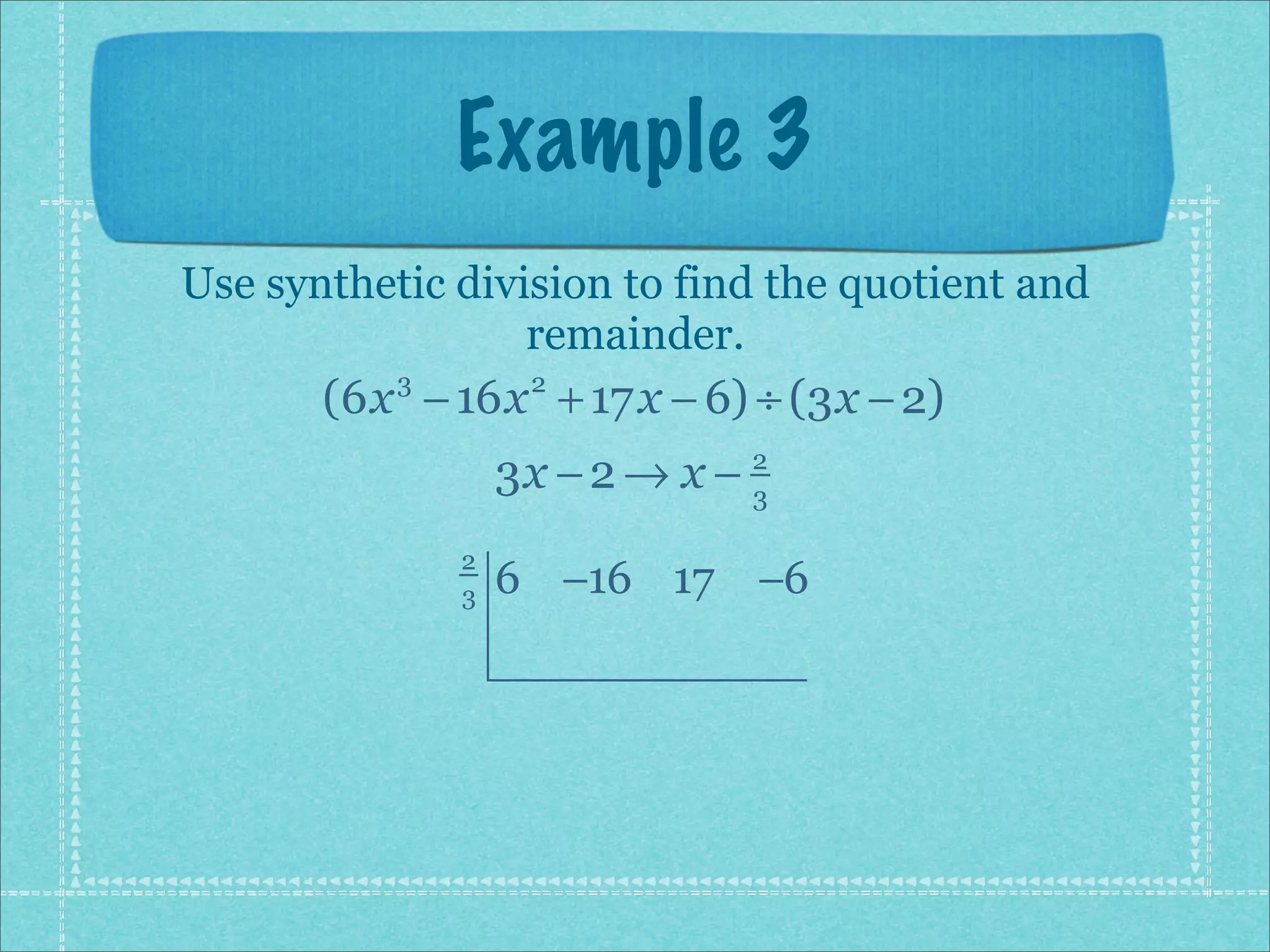

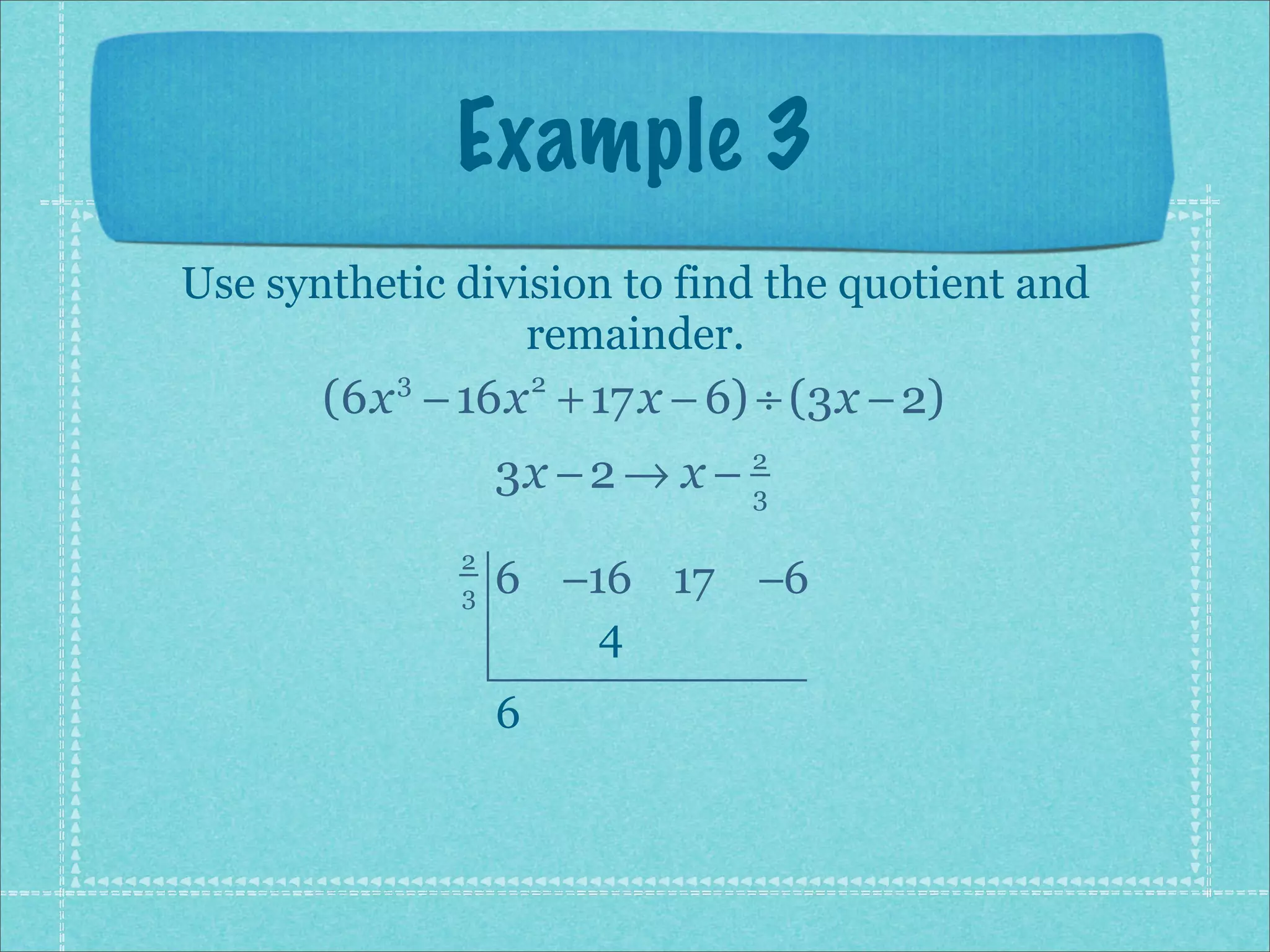


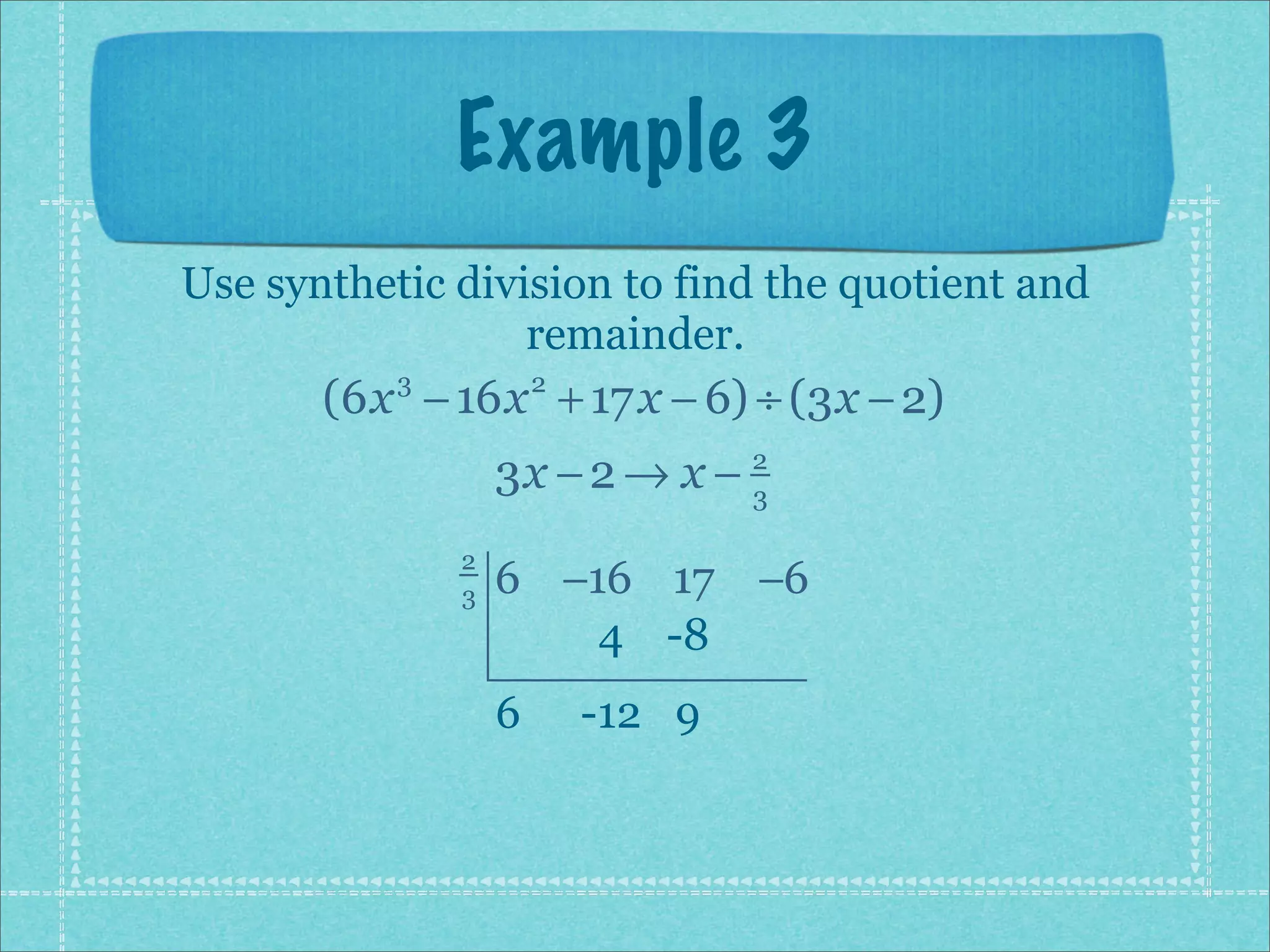
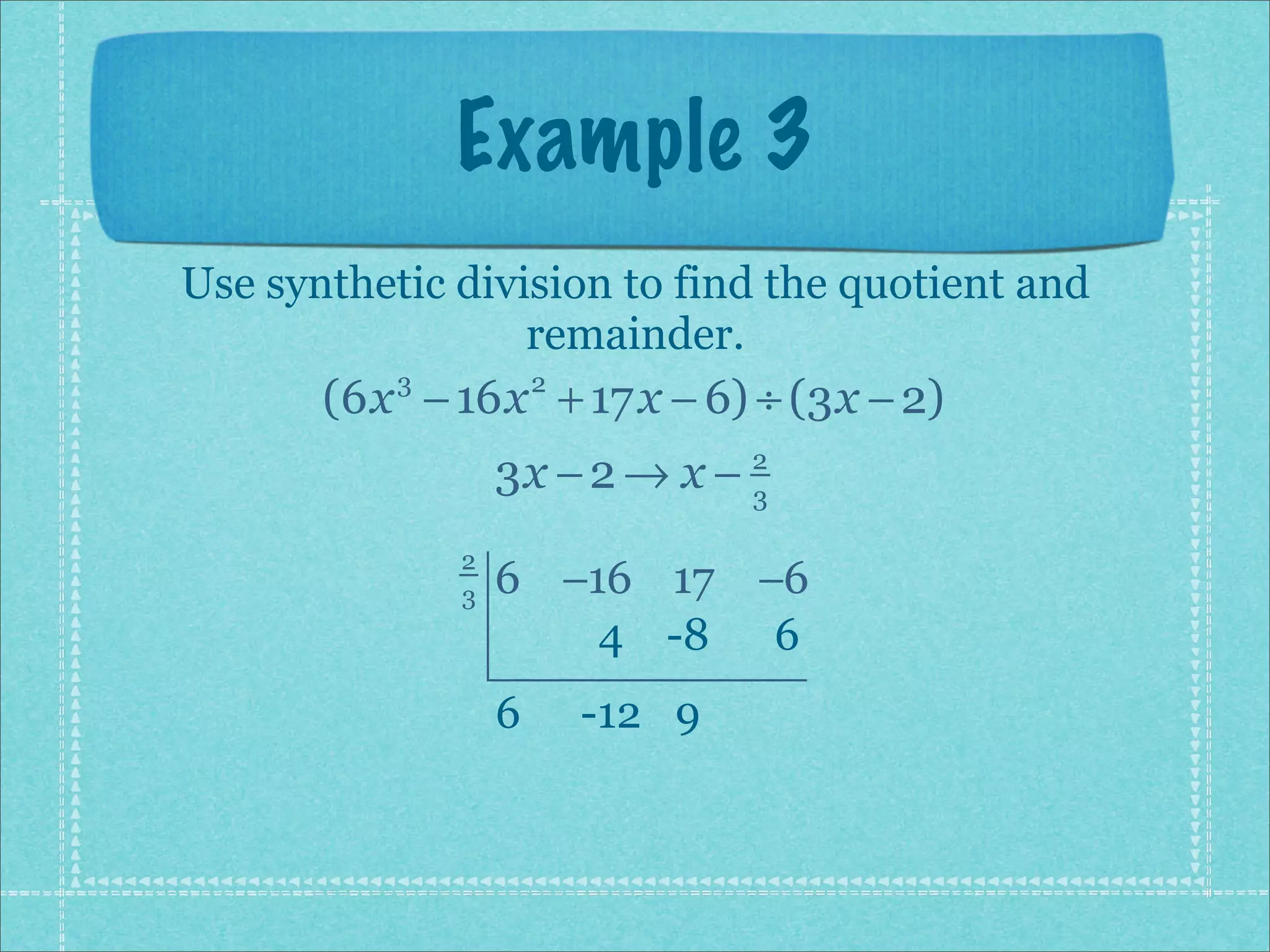
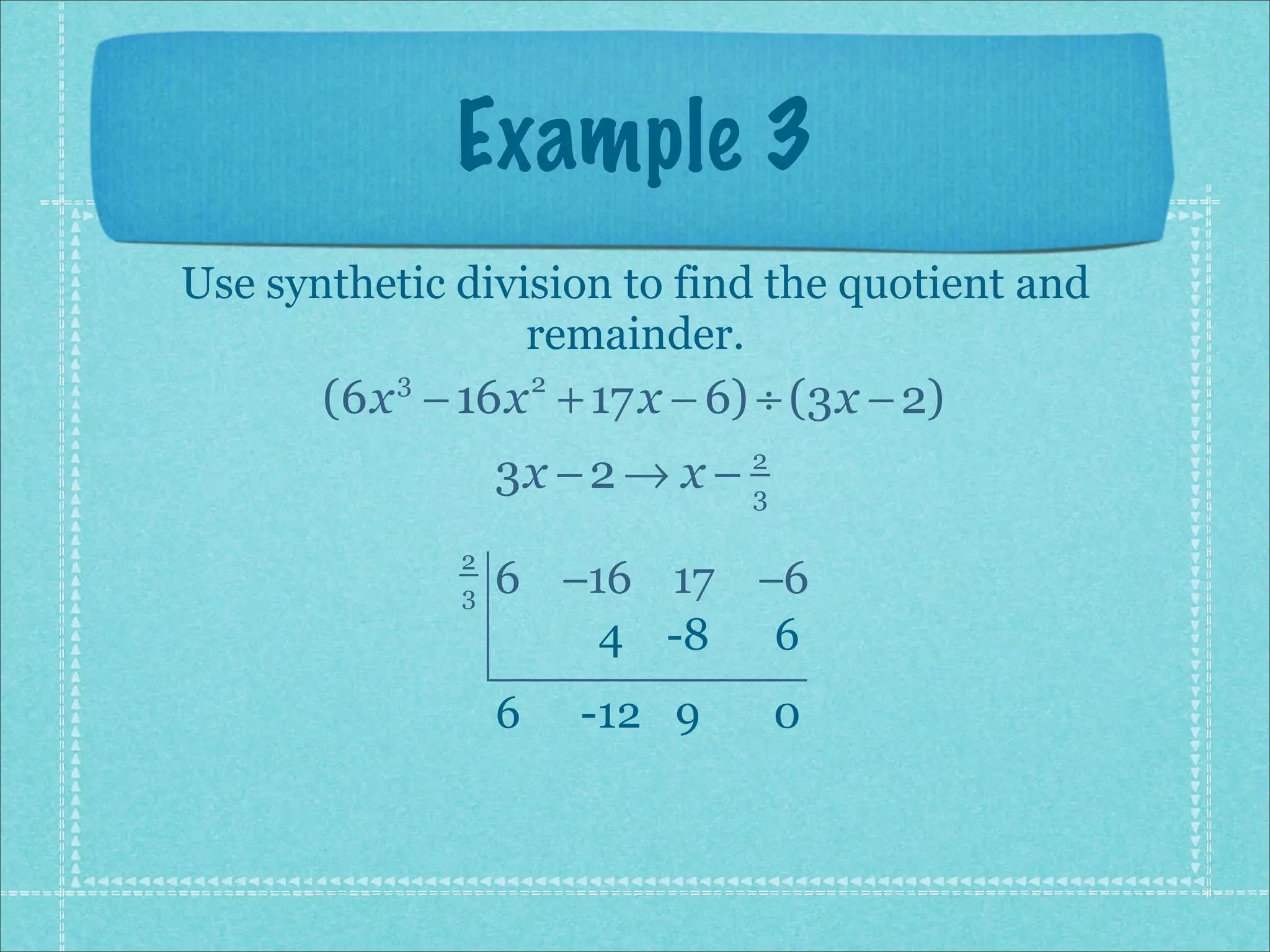


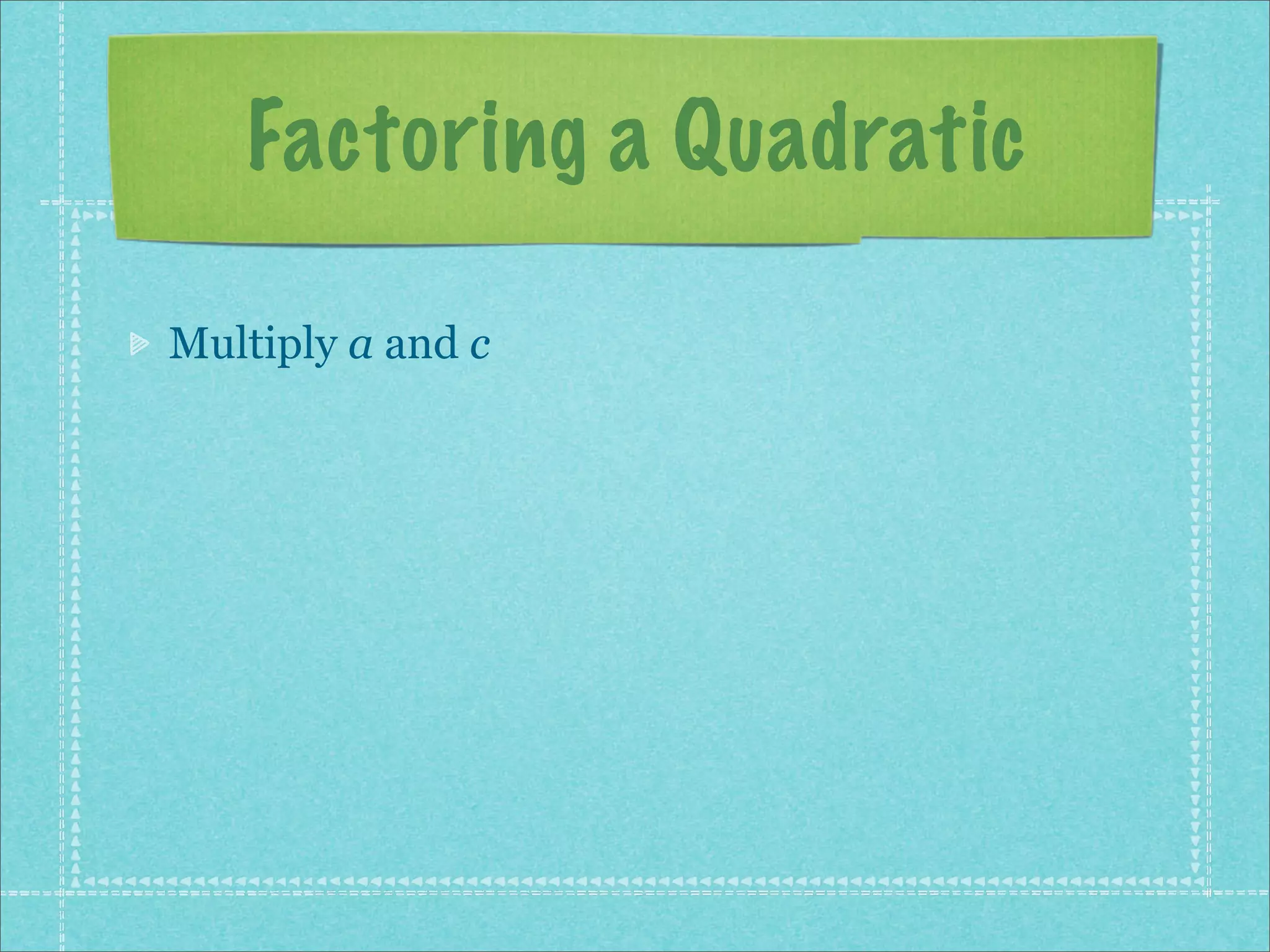







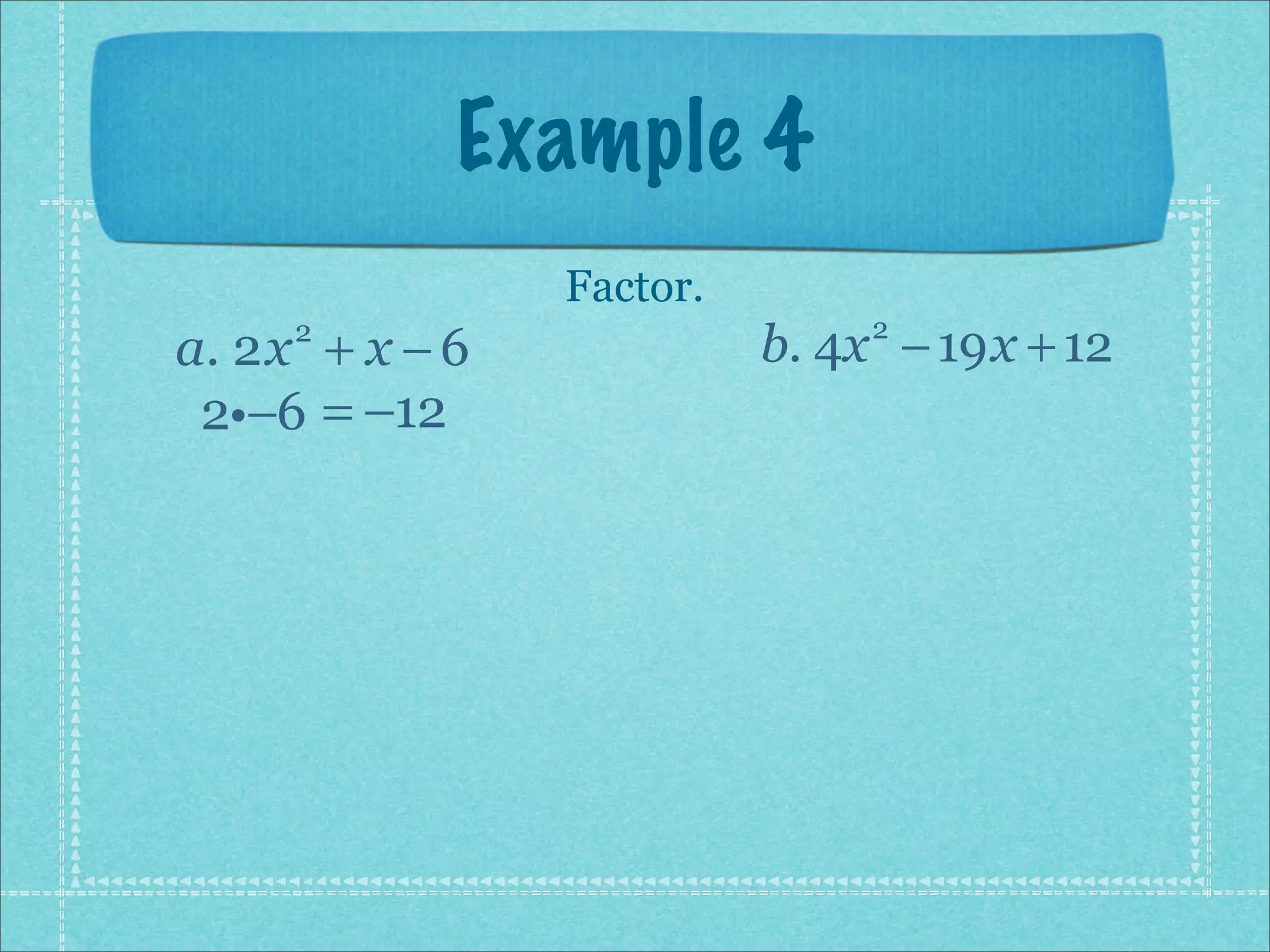


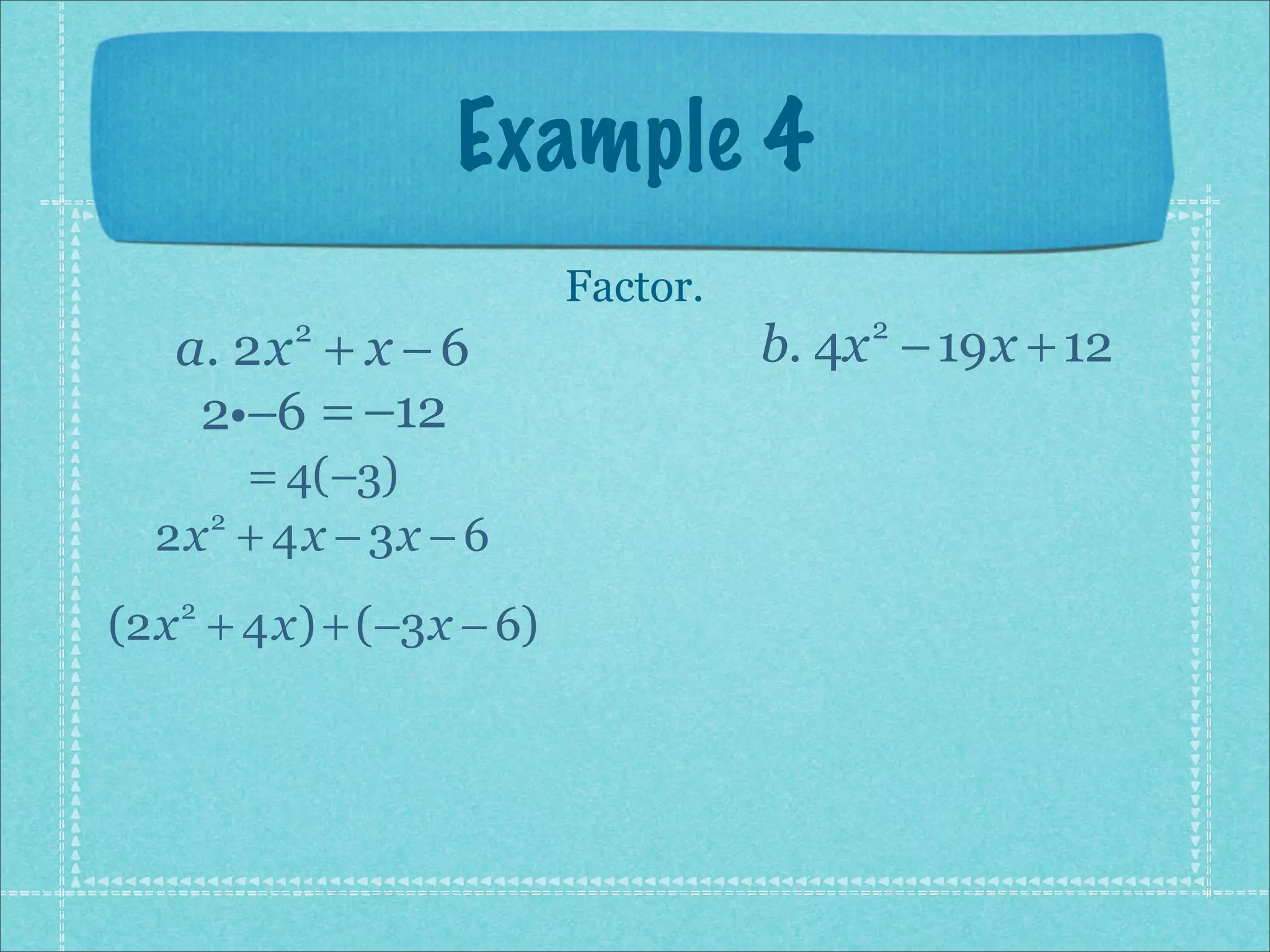





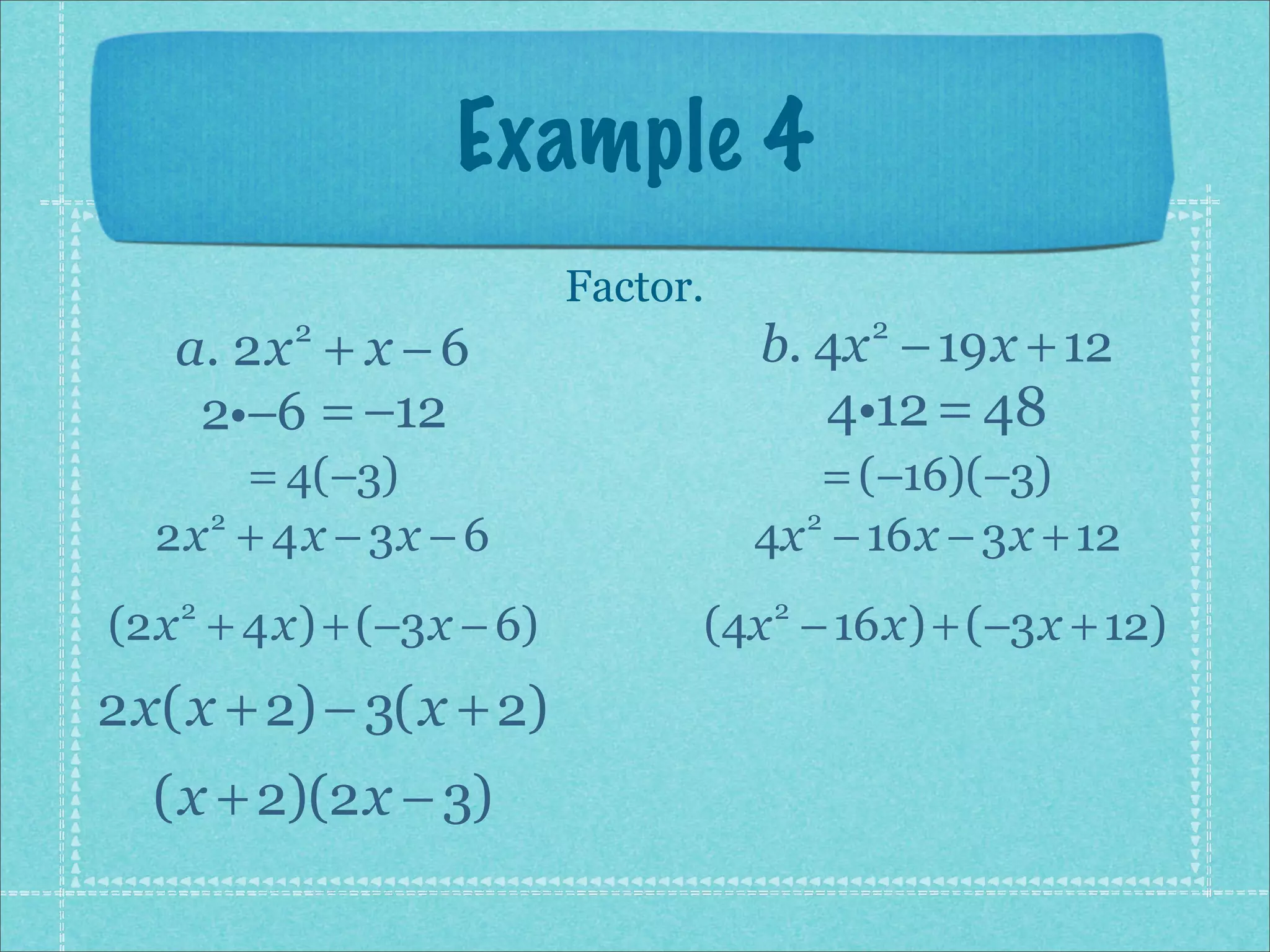




1) The document discusses synthetic division, which is a method for dividing polynomials without using variables. 2) It provides an example of using synthetic division to determine if 1 is a root of the polynomial 4x - 3x + x + 5. 3) Another example uses synthetic division to find the quotient and remainder of (4x - 7x - 11x + 5) divided by (4x - 5).
This slide introduces synthetic division through a warm-up problem, dividing a polynomial by a linear factor.
Introduces Rational Roots Theorem stating possible roots are p/q, where p and q are factors of the leading coefficient and constant.
Describes synthetic division as an efficient method for dividing polynomials, applicable only with linear factors.
Example of testing if a specific value is a root of a polynomial using synthetic division.
Guides on using synthetic division to find both the quotient and the remainder of polynomial division.
Uses synthetic division to examine a polynomial and presents its division by a linear polynomial.
Continuing from Example 2, more detailed steps in synthetic division with a polynomial are presented.
Introduction to factoring quadratics, outlining steps from multiplying 'a' and 'c' to factorization.
Provides examples to illustrate the process of factoring quadratic expressions, focusing on grouping terms.
Concludes with homework assignment related to synthetic division and factoring quadratics.


















































































